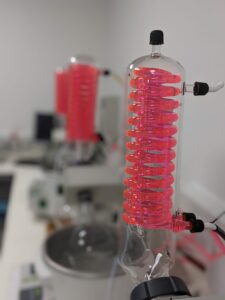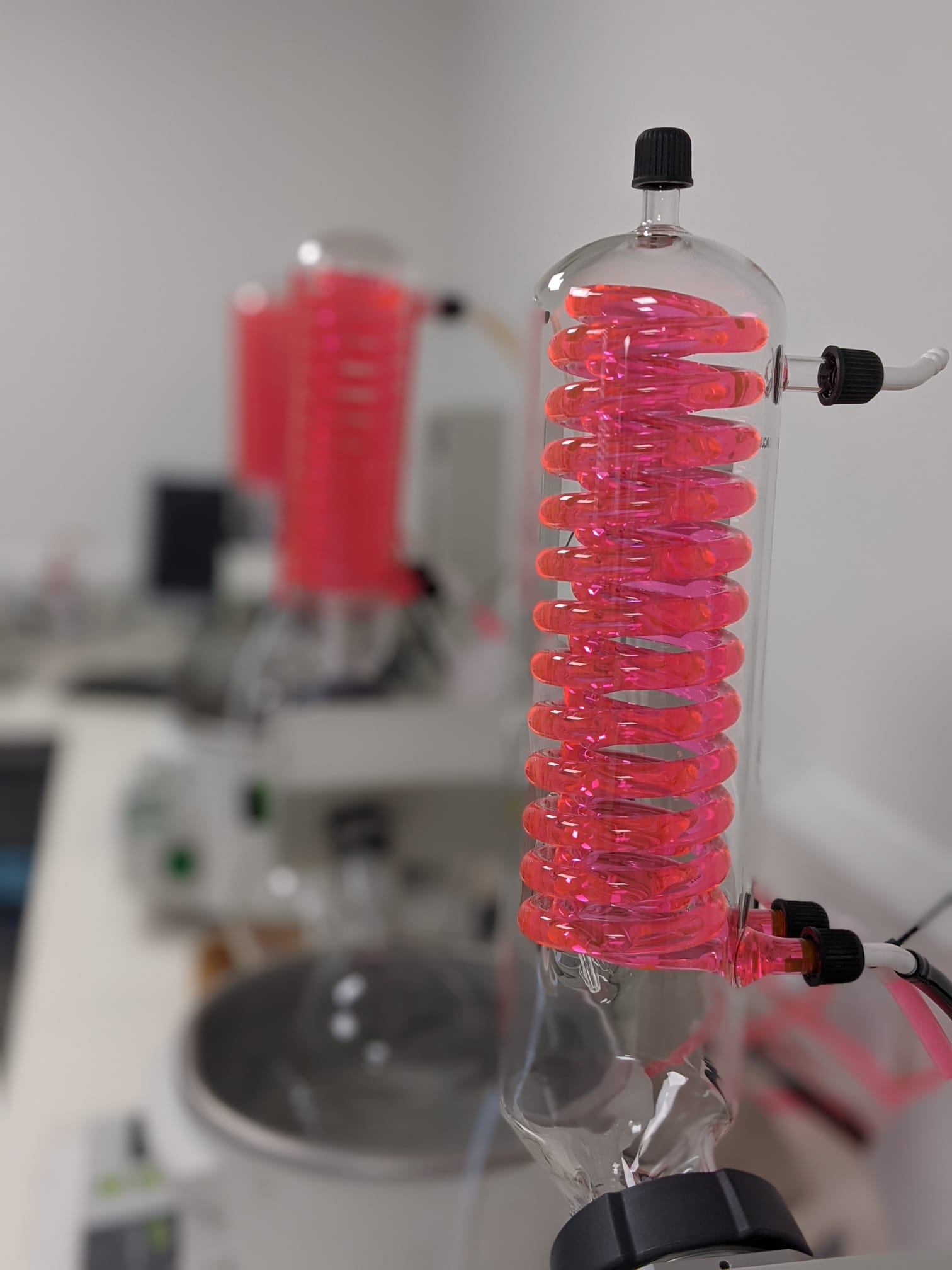At Reach Separations, we are determined to reduce the environmental impact of our labs. The aims of Reach’s ongoing sustainability project are to: reduce the associated carbon emissions, improve awareness and to connect with like-minded companies (so please get in touch).
Simple Swaps:
Below we have listed some changes made in the Reach labs that could be implemented in any lab, the easy wins!

- Introduction of glycol chillers on rotary evaporators to reduce water consumption and improve time efficiency.
- Replace DCM with 3:1 EtOAc:EtOH1
- Reduce the use of single-use plastic consumables and single-use nitrile gloves.
- Lower fumehood sashes and switch off instruments which are not in use, to reduce energy consumption.
- Standardise instrument cleaning procedures to reduce solvent waste.
- Solvent recycling within the purification of a compound to reduce the solvent usage.
- Segregating of waste solvent, to allow for solvent recovery during the waste disposal.
- Implement companywide office recycling systems.
Challenges:
Starting up this project proved to be a challenge; the information available to SMEs can be vague and often difficult to implement. We found it hard to determine which metrics to prioritise and how to compare different options. The ‘simple swaps’ we made felt a little meaningless when we looked at the over carbon footprint of the lab.
Big Changes:
To dramatically reduce our energy consumption, limit our use of raw materials and minimise waste, we needed look at the methods of purification we were using in the lab.
To do this we used the ACS GCI greenscore calculator2. This calculator provides a generic metric to compare chromatographic methods. Reach have been using this tool to make decisions about purification methods which would be the most environmentally friendly.
At Reach we have always seen the huge benefits of SFC. A separation can often be achieved in a much shorter time frame and require far less solvent consumption in comparison to traditional normal phase chromatography. We’re applying this wherever we can and striving to achieve more achiral separations by SFC too. More information on this to follow.
Overall approach:
At Reach, we are taking a holistic approach to sustainability. We have a ‘right first time’ philosophy and try to be logical. Our approach is aimed at looking at a drug product’s overall environmental impact, not just that of the chromatographic process. We won’t compromise on the robustness of a purification method or sacrifice purity and recovery, which would be significantly less sustainable when accounting for the entire process.
References:
- Green Chem., 2012,14, 3020-3025
- https://www.acsgcipr.org/tools-for-innovation-in-chemistry/about-the-analytical-method-greenness-score-amgs-calculator/

